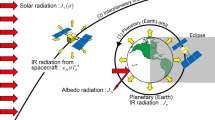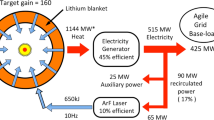Abstract
We are develo** a lumped element kinetic inductance detector (LEKID) array which can operate in the W-band (75\(-\)110 GHz) in order to perform ground-based cosmic microwave background (CMB) and mm-wave astronomical observations. The W-band is close to optimal in terms of contamination of the CMB from Galactic synchrotron, free-free, and thermal interstellar dust. In this band, the atmosphere has very good transparency, allowing interesting ground-based observations with large (\(>\)30 m) telescopes, achieving high angular resolution (\(<\)0.4 arcmin). In this work we describe the startup measurements devoted to the optimization of a W-band camera/spectrometer prototype for large aperture telescopes like the 64-m Sardinia Radio Telescope. In the process of selecting the best superconducting film for the LEKID, we characterized a 40-nm-thick aluminum 2-pixel array. We measured the minimum frequency which can break CPs (i.e., \(h\nu =2\Delta \left( T_\mathrm{c}\right) =3.5\,k_\mathrm{B}T_\mathrm{c}\)) obtaining \(\nu =95.5\) GHz, which corresponds to a critical temperature of 1.31 K. This is not suitable to cover the entire W-band. For an 80-nm layer the minimum frequency decreases to 93.2 GHz, which corresponds to a critical temperature of 1.28 K; this value is still suboptimal for W-band operation. Further increase of the Al film thickness results in bad performance of the detector. We have thus considered a Titanium–Aluminum bi-layer [10-nm-thick Ti \(+\) 25-nm-thick Al, already tested in other laboratories (Catalano et al. in Astron Astrophys 580:A15, 2015)], for which we measured a critical temperature of 820 mK and a cut-on frequency of 65 GHz, so this solution allows operation in the entire W-band.








Similar content being viewed by others
References
Planck Collaboration. (2015). ar**v:1502.01588
A.H. Guth, Phys. Rev. D 23, 347 (1981). doi:10.1103/PhysRevD.23.347
Y.B. Zeldovich, R.A. Sunyaev, Astrophys Space Sci. 7, 3 (1970). doi:10.1007/BF00653471
S.J. Melhuish, L. Martinis, L. Piccirillo, Cryogenics 55–56, 63 (2013). doi:10.1016/j.cryogenics.2013.03.002
A. Catalano, J. Goupy, H. le Sueur, A. Benoit, O. Bourrion, M. Calvo, A. D’Addabbo, L. Dumoulin, F. Levy-Bertrand, J. Macías-Pérez, S. Marnieros, N. Ponthieu, A. Monfardini, Astron. Astrophys. 580, A15 (2015). doi:10.1051/0004-6361/201526206
S. Doyle, P. Mauskopf, J. Naylon, A. Porch, C. Duncombe, J. Low Temp. Phys. 151, 530 (2008). doi:10.1007/s10909-007-9685-2
I. Colantoni, F. Bellini, L. Cardani, N. Casali, M.G. Castellano, A. Coppolecchia, C. Cosmelli, A. Cruciani, A. D’Addabbo, S. Di Domizio, M. Martinez, C. Tomei, and M. Vignati, J. Low Temp. Phys. (2015). doi:10.1007/s10909-015-1452-1
Acknowledgments
We would like to thank Roberto Diana and Anritsu; the measurements between 58 and 70 GHz were made possible thanks to the loan of Anritsu MS4647B VNA. This research was supported by Sapienza University of Rome and the Italian Space Agency.
Author information
Authors and Affiliations
Corresponding author
Rights and permissions
About this article
Cite this article
Paiella, A., Coppolecchia, A., Castellano, M.G. et al. Development of Lumped Element Kinetic Inductance Detectors for the W-Band. J Low Temp Phys 184, 97–102 (2016). https://doi.org/10.1007/s10909-015-1470-z
Received:
Accepted:
Published:
Issue Date:
DOI: https://doi.org/10.1007/s10909-015-1470-z




